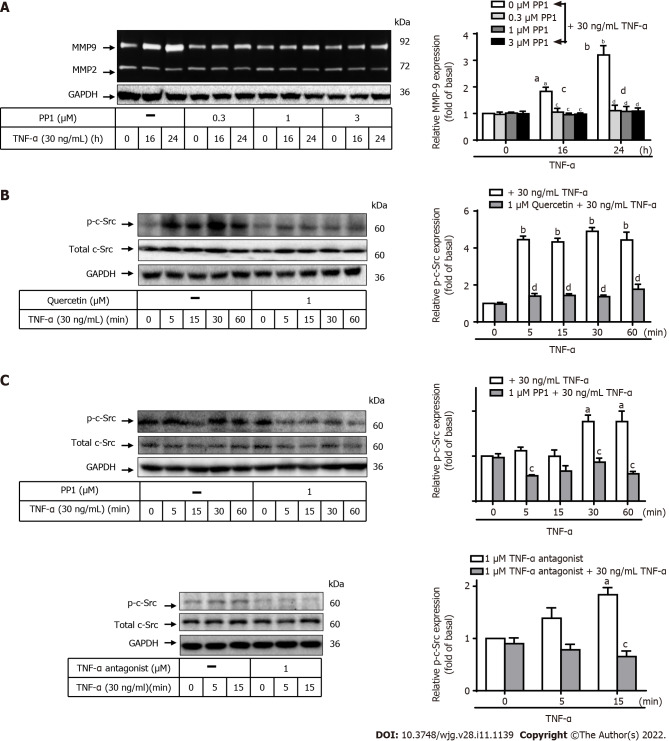Figure 4.
Quercetin suppresses tumor necrosis factor-α-induced matrix metallopeptidase-9 expression via tumor necrosis factor-α antagonist-proto-oncogene tyrosine-protein kinase Src in normal human gastric mucosa epithelial cells. A: Cells were either untreated or treated with PP1 (0, 0.3, 1, or 3 mM) for 1 h before the addition of tumor necrosis factor-α (TNF-α) (30 ng/mL) and then incubated for 0, 16, or 24 h as described in the Materials and Methods section. Matrix metallopeptidase-9 (MMP-9) zymogen activity was analyzed by gelatin zymography; B and C: Cells were either untreated or treated with quercetin (B; 0 or 1 mM) or PP1 (C; 0 or 1 mM) or TNF-α antagonist (1 mM) for 1 h before the addition of TNF-α (30 ng/mL) and incubated for 0, 16, or 24 h. The phosphorylation of c-Src was measured using Western blot analysis after incubation of cells with TNF-α for 0, 5, 15, 30, or 60 min. One-way ANOVA was used for comparisons among different treatment time points (aP < 0.05, bP < 0.01 vs control cells in 0 h). One-way ANOVA was used for comparisons among different treatments (cP < 0.05, dP < 0.01 vs TNF-α-stimulated cells). Data are expressed as the mean ± SEM of three independent experiments. c-Src: Proto-oncogene tyrosine-protein kinase Src; GAPDH: Glyceraldehyde-3-phosphate dehydrogenase; GES-1: Normal human gastric mucosa epithelial cell line; MMP-9: Matrix metallopeptidase-9; TNF-α: Tumor necrosis factor-α.

